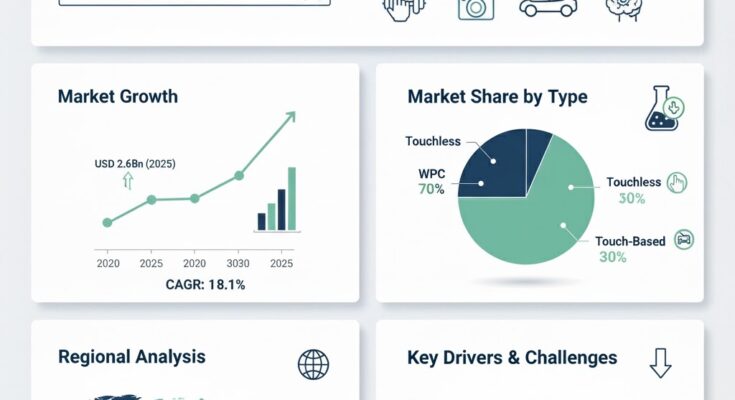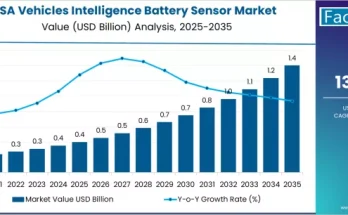The global automotive gesture recognition market is set for remarkable growth, with projections estimating a rise from USD 2.6 billion in 2025 to an impressive USD 14.2 billion by 2035, registering a robust CAGR of 18.5%, according to a recent report by Fact.MR. This surge is primarily driven by the increasing adoption of electric and autonomous vehicles, rising consumer demand for intuitive interfaces, and advancements in AI-enabled touchless technologies.
Gesture Recognition: Revolutionizing Automotive Human-Machine Interaction
Automotive gesture recognition technology allows drivers and passengers to control vehicle functions through hand and body movements without direct physical contact. This innovation enhances the in-car user experience while prioritizing driver safety by minimizing distraction. With features such as hand and finger tracking, facial recognition, and infrared sensing, gesture recognition systems are increasingly being integrated into luxury vehicles and high-end models.
“The shift towards touchless interfaces is transforming the automotive landscape,” said a senior analyst at Fact.MR. “Consumers now expect safer, more seamless interaction with vehicle systems, and manufacturers are responding with gesture recognition technologies that merge convenience, efficiency, and safety.”
Key Market Drivers
The growth trajectory of the automotive gesture recognition market is underpinned by several factors:
-
Safety and Regulatory Influence: Rising concerns over driver inattentiveness and stringent safety regulations have prompted automakers to adopt advanced systems that minimize manual interactions, improving overall road safety.
-
Luxury Vehicle Integration: High-end and electric vehicles are increasingly equipped with gesture recognition systems to enhance user experience and differentiate products in a competitive market.
-
Technological Advancements: AI and machine learning innovations have significantly improved gesture recognition accuracy and responsiveness, enabling more complex gestures and reducing system errors.
-
Consumer Demand for Intuitive Interfaces: Drivers and passengers are increasingly favoring touchless controls for infotainment, navigation, lighting, and other vehicle functions, fueling demand across all vehicle segments.
Regional Insights
East Asia is poised to capture a significant market share, with China expected to lead the region at a 19.5% CAGR from 2025 to 2035. The Asia-Pacific market benefits from high vehicle production volumes, rising middle-class incomes, and strong adoption of advanced automotive technologies. In Europe, Germany emerges as a key investment hub due to its robust luxury automotive sector and growing emphasis on autonomous mobility. North America and other developed markets are expected to exhibit steady growth, driven by adoption in premium electric and autonomous vehicle segments.
Component Trends
The global market is categorized into touch-based and touchless systems, with touchless systems projected to dominate due to their superior user experience and alignment with driver attentiveness initiatives. Gesture recognition systems are increasingly deployed across multiple applications, including multimedia, infotainment, navigation, and lighting, with hand gestures remaining the most widely adopted mode of authentication.
Competitive Landscape
The automotive gesture recognition market is highly competitive, with major players such as Cognitec Systems GmbH, Harman International Industries, Eyesight Technologies, Visteon Corp., NXP Semiconductors, Synaptics Incorporated, Continental AG, and Qualcomm Inc. leading innovation efforts. Companies are investing in research and development, strategic partnerships, and mergers to enhance their market presence globally. For example, in January 2025, HARMAN announced partnerships aimed at expanding its library of advanced automotive solutions, including gesture recognition and in-car connectivity systems.
Looking Ahead
Over the forecast period, the automotive gesture recognition market is expected to be a critical enabler of safer, more intuitive driving experiences. With continuous advancements in AI, sensor technologies, and autonomous vehicle integration, gesture recognition systems are likely to become a standard feature in both premium and mainstream vehicles, driving growth across regions and applications.
About Fact.MR
Fact.MR is a trusted market research and competitive intelligence provider, offering deep insights into emerging technologies, consumer trends, and industry forecasts. The company leverages proprietary methodologies and expert analyses to deliver actionable intelligence for business leaders and stakeholders worldwide.



